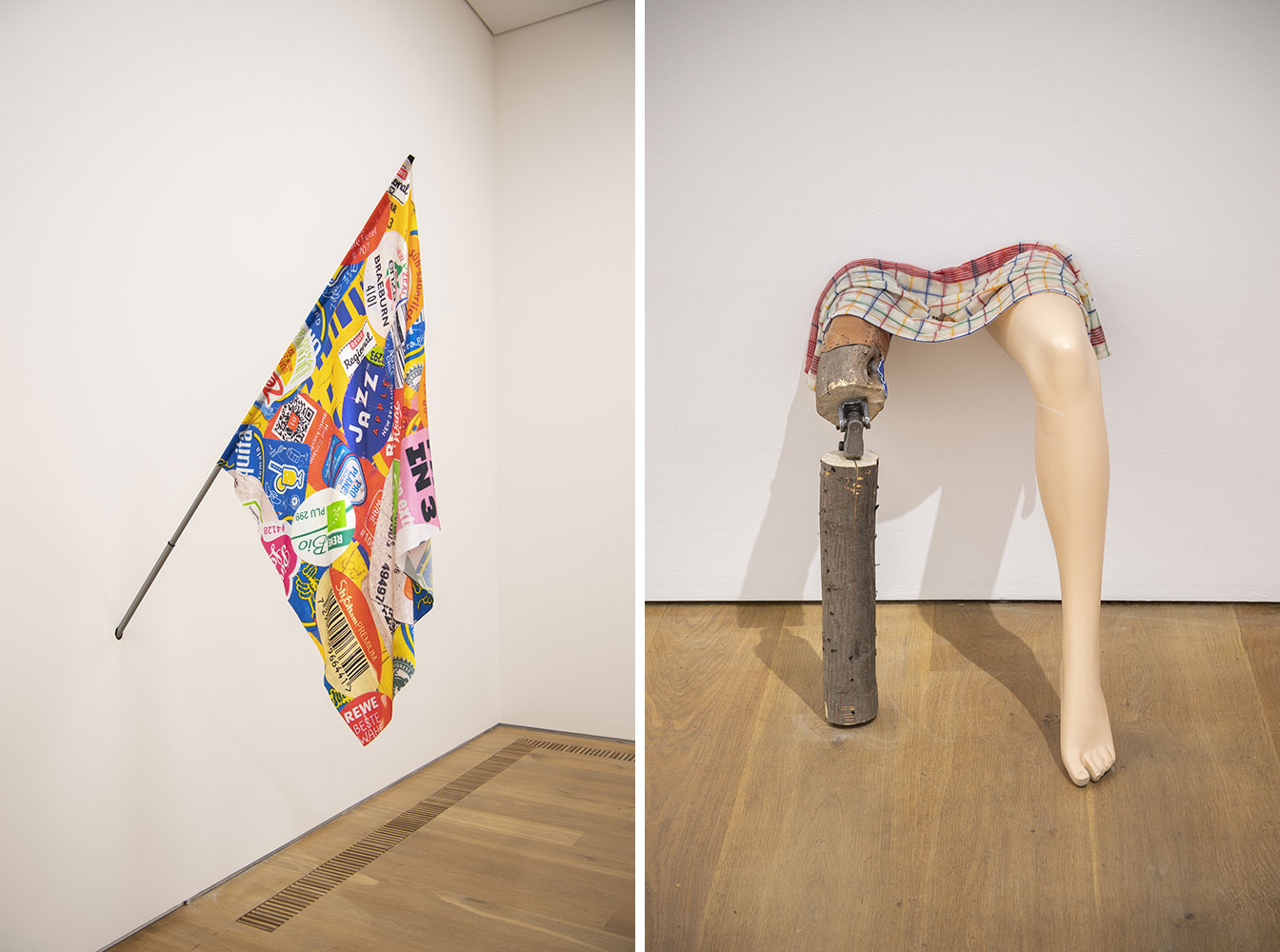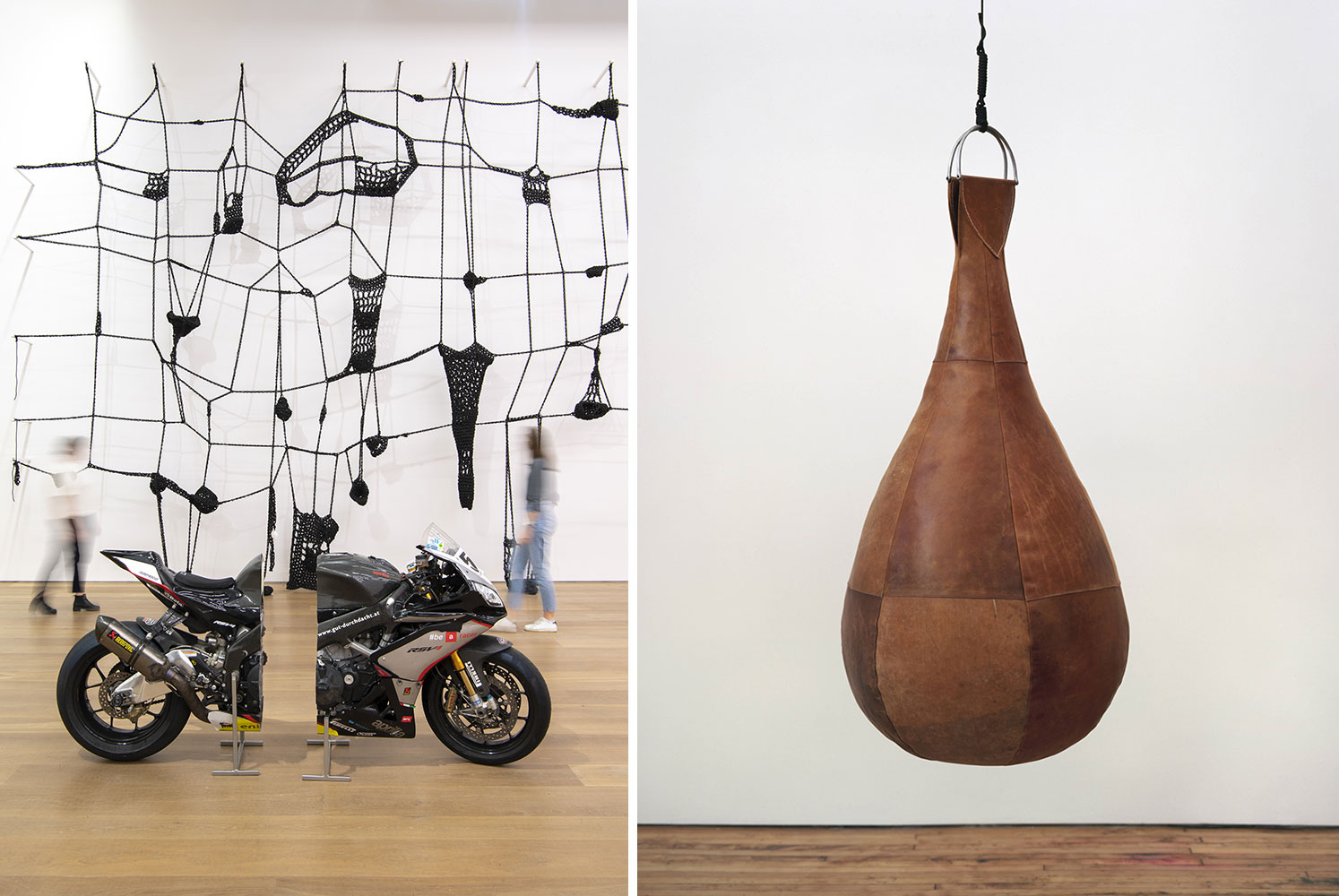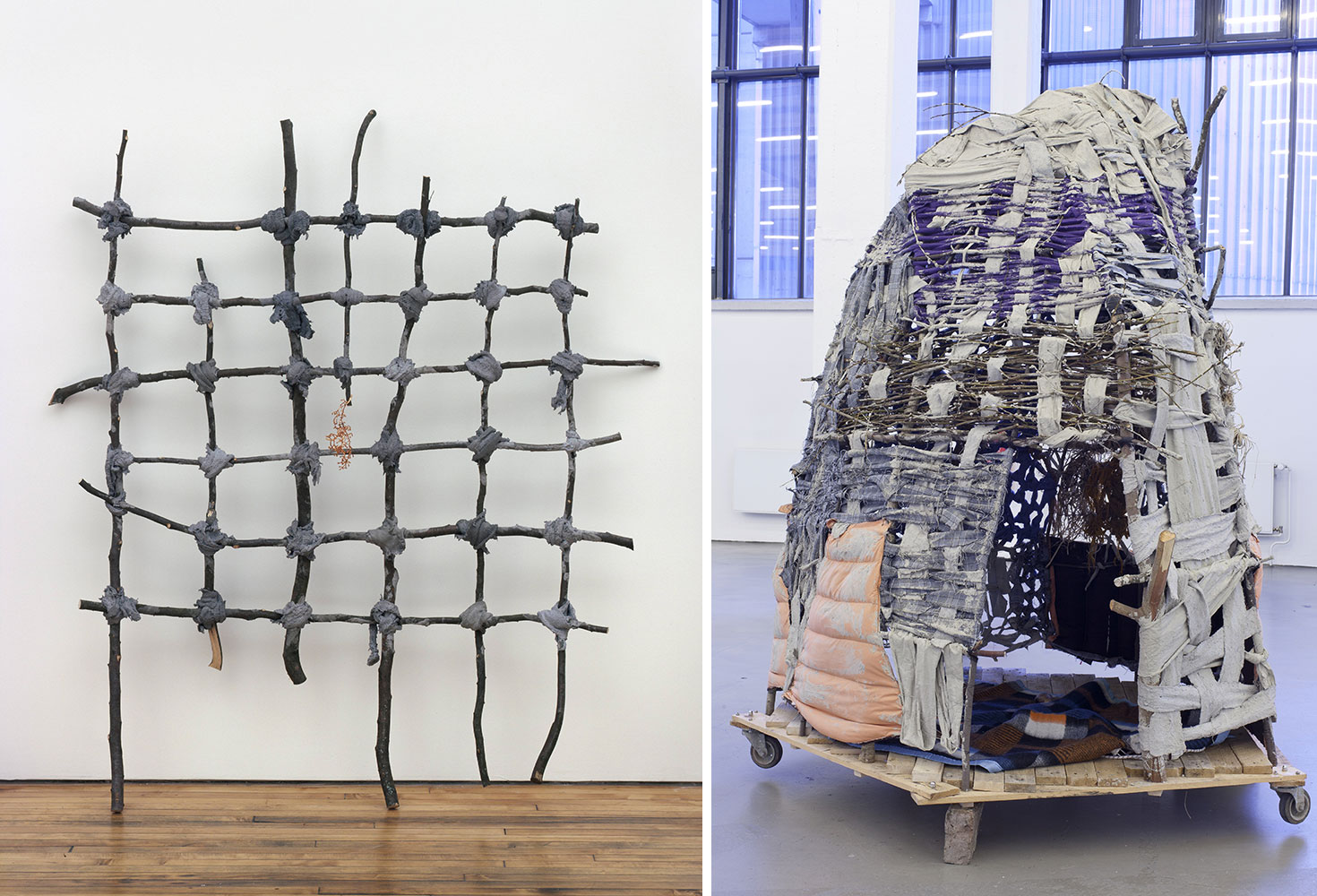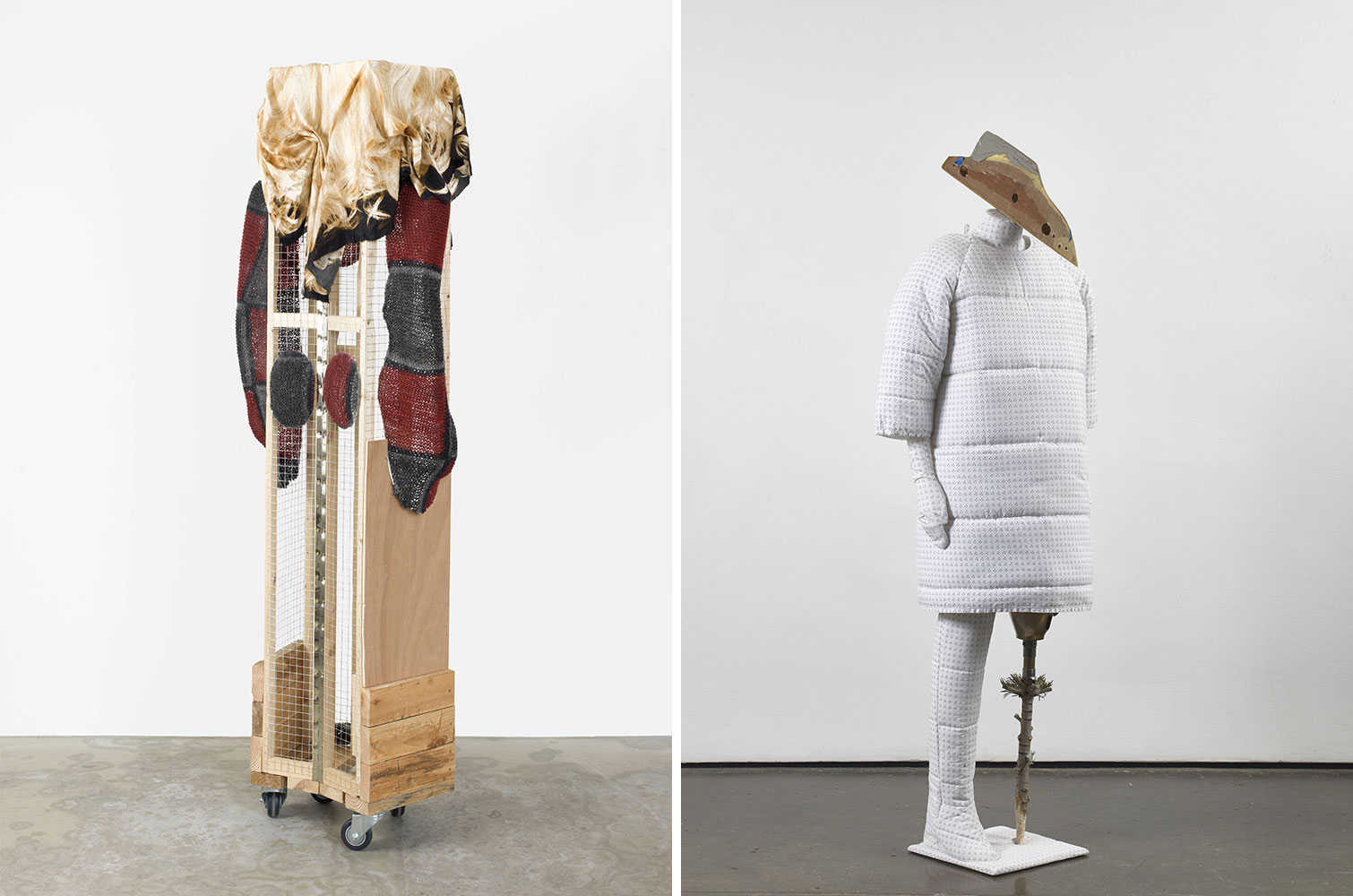PRESENTATION: Alexandra Bircken A-Z
 that surrounds us can become a sculptural medium, Alexandra Bircken is best known for her objects and installations that incorporate an unusual range of materials: from everyday objects such as hair-dye packaging, rocking horses and sawn-up motorcycles, through textiles in handmade and machine-processed form to organic matter such as wood, leather, bones, or even a placenta.
that surrounds us can become a sculptural medium, Alexandra Bircken is best known for her objects and installations that incorporate an unusual range of materials: from everyday objects such as hair-dye packaging, rocking horses and sawn-up motorcycles, through textiles in handmade and machine-processed form to organic matter such as wood, leather, bones, or even a placenta.
By Efi Michalarou
Photo: Museum Brandhorst Archive
The exhibition “Alexandra Bircken: A–Z“ is the largest solo show of Alexandra Bircken and brings together works from throughout her practice: from the first sculpture completed in Bircken’s store-front studio “Alex” in Cologne in 2003 to installations that she conceived especially for the space at Museum Brandhorst. Rather than proceeding chronologically, this show uses themes and formal concepts to progress through the artist’s oeuvre, attempting to capture her sculptural repertoire of forms from “A–Z”: from Bircken’s exploration of textiles to the relationship of the human body to its environment and to her vibrant and organic-seeming machines. Alexandra Bircken has played a significant role in shaping central themes of sculpture since the 2000s. Updating concepts and approaches first explored in Arte Povera and textile art, Birken expands them to include questions of technology, albeit with an analog approach. Highly topical questions such as the need for protection of the individual, gender identity and its ambivalence, and the relationship between humans and machines are taken up and thematized in her sculptures and installations. Bircken’s objects are made from recognizable objects and materials and yet the combinations she makes are always unexpected, playful and suggestive. She places the original functions and values of these materials and objects in new contexts, implicitly referring to the beauty of the everyday. It is the overall composition, not the individual parts or materials, that is key. In the obviously hand-made and irregular way these compositions are put together and the combination of the sometimes soft, sometimes hard components, Bircken’s works can be described as composed clusters. A prime example of this is “Pamela Combat” (2010) – a horizontal ski with straight fake hair hanging from it. The combination of false hair and a ski is alienating, and the title adds a frivolous element to this assemblage. Bircken trained as a fashion designer at Central St Martins College of Art and Design in London. After completing her studies she spent a number of years working in fashion design. Her studio in Cologne was next door to Galerie BQ, which later moved to Berlin. After seeing some of her more outré designs, BQ offered her a one-woman show in 2004. Since then Bircken has presented herself as an artist, although her background shines through in her appreciation of the tactile qualities of materials. Her objects, even the motorcycle leathers that she stretches as if they were cowhides, do not reference their practical value or wearability. Her oeuvre so far can be conceived as series of works that correspond with one another – much like the sort of coherent season’s collection that fashion designers produce.
Photo: Alexandra Bircken, Klein’s Jacket, 2017, Bronze, 74 × 84 × 9 cm, Loan from the Federal Republic of Germany – Collection of Contemporary Art, © Alexandra Bircken. Photo: Roman März, Berlin, Courtesy BQ, Berlin and Herald St, London



Right: Alexandra Bircken Deine Beine, 2019, Wood, metal joint, leather, nails, leg of a mannequin, acrystal acryic resin, tea towel, epoxy, acorn, © Alexandra Bircken. Photo: Haydar Koyupinar, Bayerische Staatsgemäldesammlungen, Museum Brandhorst, Munich


Right: Alexandra Bircken, Demolition Ball / Cassius, 2011, Leather, foam, metal, thread, 170 × ø 81.5 cm, Collection Dennis Kimmerich, © Alexandra Bircken. Photo: Thomas Müller, New York, Courtesy BQ, Berlin and Herald St, London

Right: Alexandra Bircken, Cagey, 2012, Branches, Weiden, Wood, Textile, Down Jaket, Mortar, Wool, Straw, Rope, Thermal Blankets, Bronze, Rolls, Screws, Bricks, 230 x 170 x 170 cm, © Alexandra Bircken. Photo: Fred Dott, Hamburg, Courtesy BQ, Berlin und Herald St, London

Right: Alexandra Bircken, The Doctor, 2020, Display mannequin, fabric, wadding, thread, metal, leg prothesis, tree trunk, model boat, metal stand, 183 × 62 × 60 cm, © Alexandra Bircken. Photo: Andy Keate, Courtesy the artist, BQ, Berlin and Herald St, London



